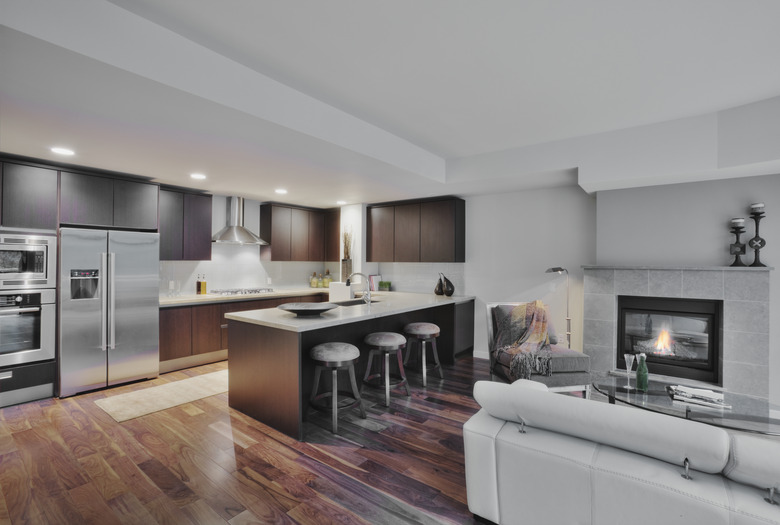Textured Ceilings Vs. Smooth Ceilings
Designers often recommend a textured ceiling when you want to make a large room feel warmer and cozier, and they also recommend some textures for soundproofing. Neither of these are the number-one reason for choosing texturing over a smooth ceiling, though. The fact that texturing hides defects, such as cracks and imperfectly taped drywall seams, is what makes it so popular.
Contrary to what you might expect, a smooth ceiling costs more than a textured one, and that's because a smooth ceiling takes more work. Fixr's 2020 prices for a popcorn ceiling show a maximum of $440, while prices for a smooth ceiling top out at $545. Keep in mind, though, that while you might save money and work at the outset by choosing a textured ceiling, you won't in the long run because texturing collects dirt and requires more frequent cleaning.
Modern Ceiling Texture Types
Modern Ceiling Texture Types
Construction Pro Tips identifies four different texturing styles, and there are many more that the website doesn't mention, such as slap brush, stipple (crow's foot) and fish scale. The texturing material could be regular drywall mud, topping compound, vinyl or even styrofoam, and the texture pattern is characteristic of the application method. The most common methods include:
- Skip troweling. This is a rough, featureless texture created by applying joint compound unevenly with a drywall knife. It's unsophisticated, but it does a great job of hiding ceiling defects.
- Knockdown techniques, which involve spraying joint compound on the ceiling or spreading blotches of it with a trowel and scraping lightly with a drywall knife. This is probably the most common type of ceiling texturing.
- Orange peel. This is also created by spraying, and no scraping is involved. Easy peasy.
- Popcorn texturing. This is notoriously retro, and many people with older homes are more interested in getting rid of it than adding more. It's a mixture of foam balls and mud that you apply by spraying, and while it's the best sound-absorbing texture, it's also the most difficult to clean.
Skim Coat for a Smooth Ceiling
Skim Coat for a Smooth Ceiling
Some texturing techniques are easier than others, but there's no easy way to skim coat a ceiling to make it smooth. The process involves spreading several thin layers of joint compound, smoothing each with a drywall knife. Finish levels range from one to five, and to get a level-five finish, you need at least three layers of joint compound.
Of course, you can achieve a smooth ceiling simply by expertly finishing the drywall seams, and if your technique is good enough to make them disappear, you don't need a texture. That's the preferred scenario, but in practice, it usually takes at least one skim coat layer to make seams disappear unless you're an experienced drywall taper with years of experience.
To Texture or Not to Texture
To Texture or Not to Texture
Because creating a smooth ceiling takes more effort and expertise than texturing, many DIYers choose to apply a texture. The process can be as easy as spraying an eggshell texture or it may involve some work with a drywall knife or some other texturing tool, but it's seldom as difficult as skim coating. Some textures, notably popcorn, don't need to be painted, which saves even more work.
Before you choose to texture, consider some potential problems. If the room is small and closed-in, texturing will amplify the claustrophobia. Moreover, if any part of the ceiling has to be repaired in the future, you might have a difficult time duplicating the texture pattern. Finally, remember that thick textures are magnets for dust, oils and grease, and nothing destroys the ambience in a room like a dirty ceiling.
